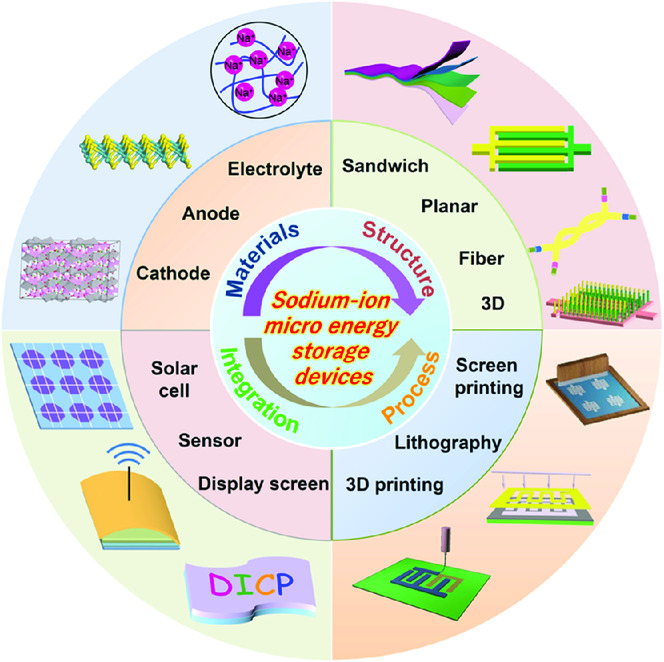J.X. Ma, S.H. Zheng, P. Das, P.F. Lu, Y. Yu*, Z.-S. Wu*
Small Structures, 2020, 1, 2000053.
DOI: 10.1002/sstr.202000053 [PDF]

The unprecedented development of flexible, wearable, and miniaturized electronics has envisaged a glorious future for mankind. However, at the same time, it has escalated the demand for microscale electrochemical energy storage devices (MEESDs). With abundant resources, low cost and properties similar to lithium, sodium ion MEESDs (NIMEESDs), e.g., sodium ion microcapacitors (NIMCs) and microbatteries (NIMBs), have emerged as high‐performance and competitive candidates for effectively powering microelectronics. Herein, the state‐of‐the‐art advances and recent developments in designing high‐performance NIMEESDs are reviewed. The study begins by introducing NIMEESDs, focusing on distinct device configurations, including stacked, interdigital, fiber‐shaped, and 3D geometries. Subsequently, the recent achievements of various well‐designed microelectrodes in Na ion storage covering intercalation, conversion, and alloying‐type reaction mechanisms are systematically discussed. Based on the device architecture, the status of high‐power and high‐energy NIMCs and NIMBs is presented. More attention is paid to the exceptional flexibility, aesthetic versatility, shape diversity, and tailored integration of NIMEESDs. Finally, future challenges associated with NIMEESDs and corresponding prospects are discussed from the viewpoint of electrochemical active materials, electrode structure, microfabrication process, and self‐powered integrated microsystems.